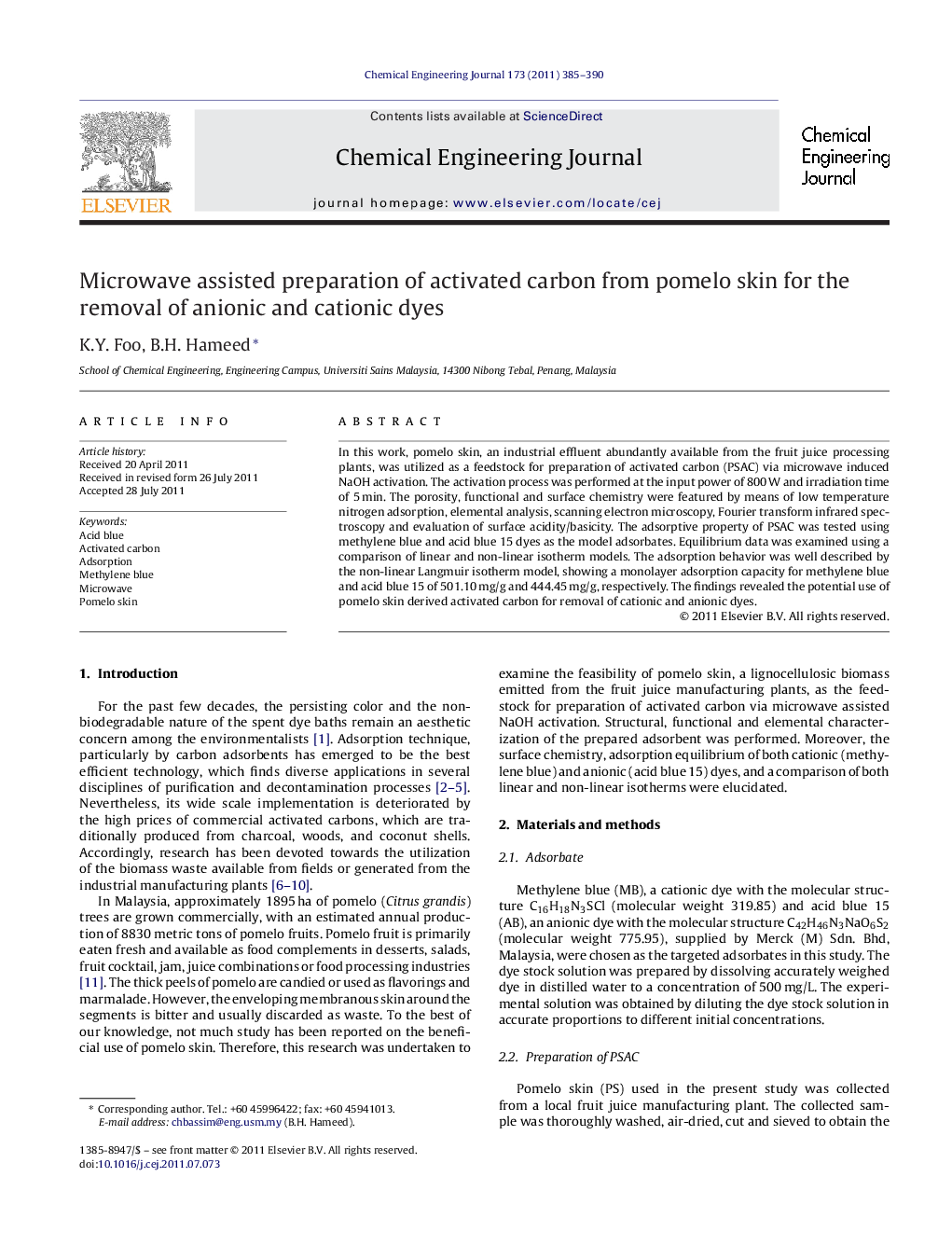| Article ID | Journal | Published Year | Pages | File Type |
|---|---|---|---|---|
| 150720 | Chemical Engineering Journal | 2011 | 6 Pages |
In this work, pomelo skin, an industrial effluent abundantly available from the fruit juice processing plants, was utilized as a feedstock for preparation of activated carbon (PSAC) via microwave induced NaOH activation. The activation process was performed at the input power of 800 W and irradiation time of 5 min. The porosity, functional and surface chemistry were featured by means of low temperature nitrogen adsorption, elemental analysis, scanning electron microscopy, Fourier transform infrared spectroscopy and evaluation of surface acidity/basicity. The adsorptive property of PSAC was tested using methylene blue and acid blue 15 dyes as the model adsorbates. Equilibrium data was examined using a comparison of linear and non-linear isotherm models. The adsorption behavior was well described by the non-linear Langmuir isotherm model, showing a monolayer adsorption capacity for methylene blue and acid blue 15 of 501.10 mg/g and 444.45 mg/g, respectively. The findings revealed the potential use of pomelo skin derived activated carbon for removal of cationic and anionic dyes.
► Highlight the renewable use of pomelo skin. ► Activation time of 5 min at the microwave input power of 800 W. ► High BET and Langmuir surface area of 1335 and 2057 m2/g. ► A comparison of linear and non-linear isotherm models was elucidated. ► High monolayer adsorption capacity for both anionic and cationic dyes.
